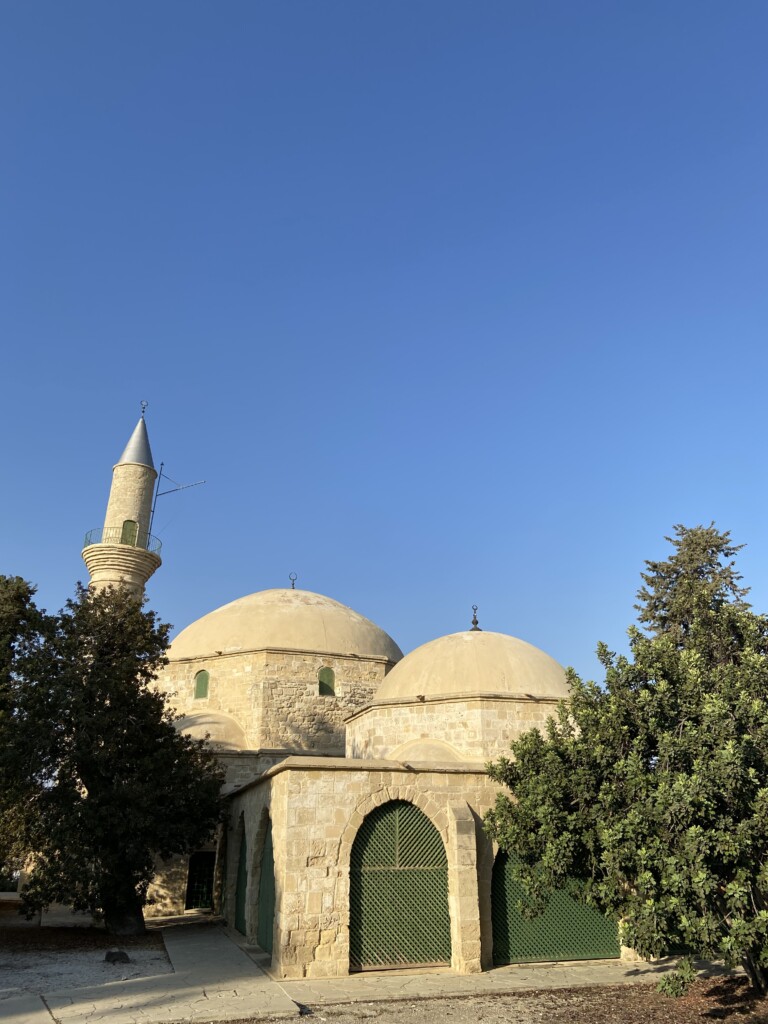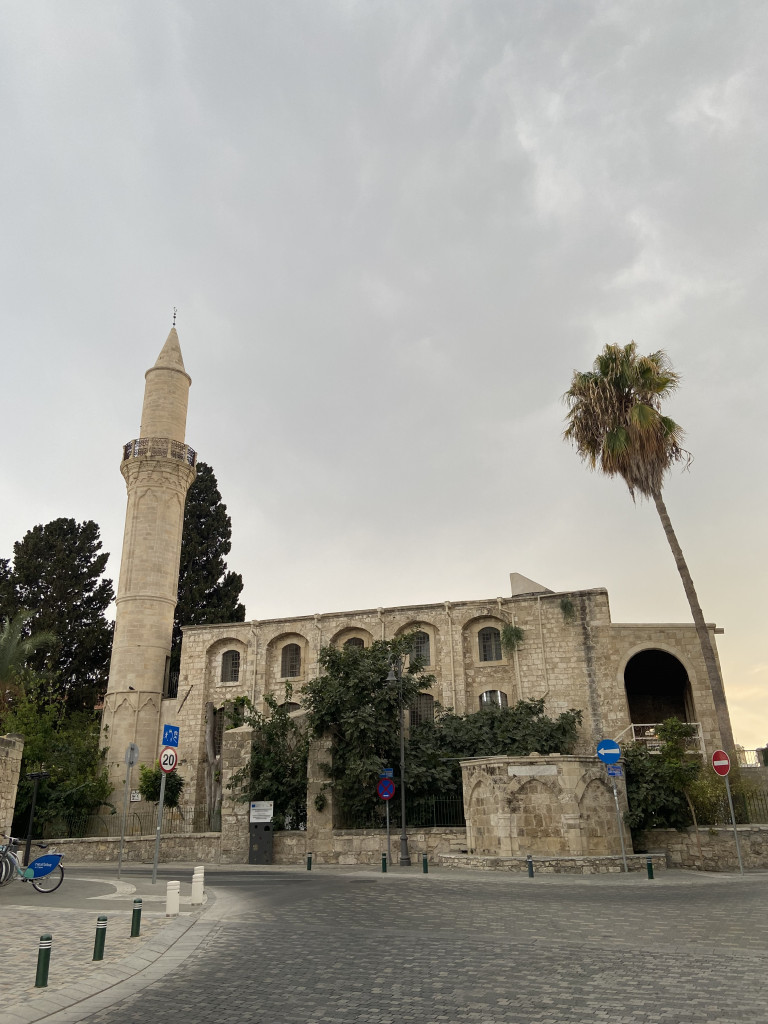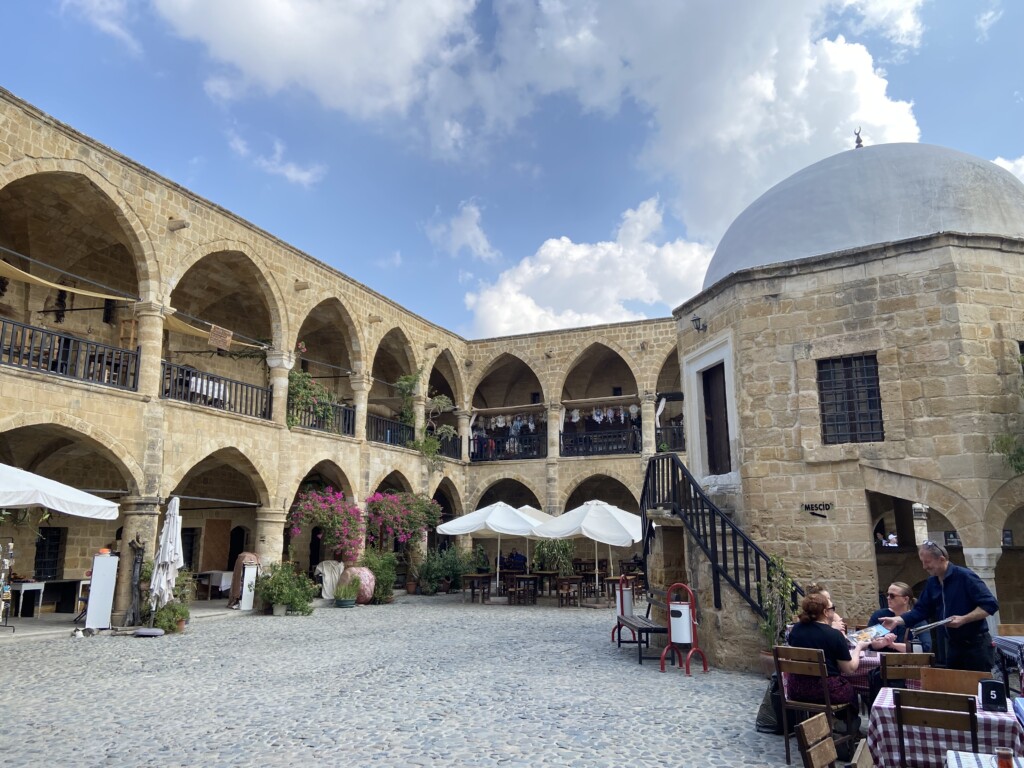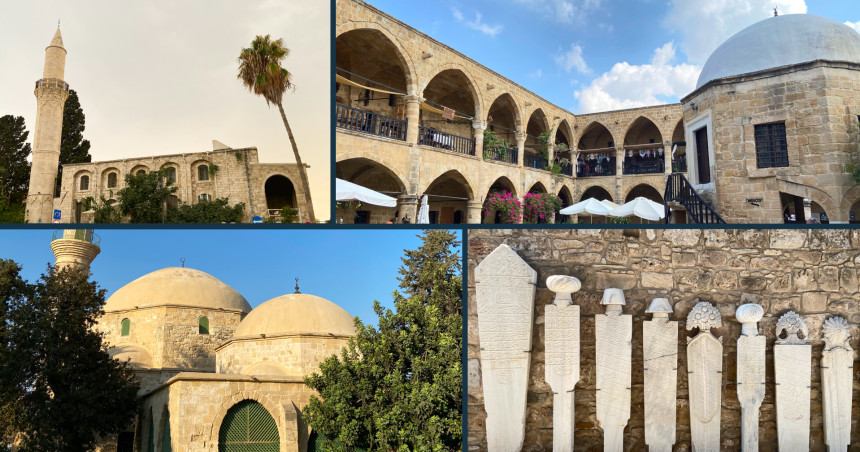In the name of Allah, the Most Gracious, the Most Merciful. All praise is due to Him, and may His peace and blessings be upon His final Messenger, Muhammad.
When we think about Europe’s Islamic history, Cyprus is unlikely to be foremost in our minds, but the East Mediterranean island’s links to the faith date back well over a millennium.
Split between the Greek Cypriot-administered Republic of Cyprus (RoC) in the South, and the Turkish Republic of Northern Cyprus (TRNC), both major parts of the island have deep Muslim roots.
And while a significant part of this heritage dates back to Ottoman rule, some can be traced all the way back to the Sahaba (radiy Allahu ‘anhum). [1]
A Sahabiyya in Cyprus
One of the island’s earliest known Islamic connections sits in a small complex known locally as the Hala Sultan Tekke, near the Republic of Cyprus’ main airport in the coastal city of Larnaca.

While the site’s Ottoman mosque and the nearby salt lake may catch one’s eye in the first instance, its most unique feature is the tomb of Umm Harām bint Milhān (radiy Allahu ‘anha) — the aunt of the Prophet Muhammad ﷺ — who died on the island in the 640s, during the reign of the rightly guided Caliph, Uthmān (radiy Allahu ‘anhu). [2]
Umm Harām, known by Turks as Hala Sultan, is mentioned in the Sīrah. The Prophet ﷺ is narrated to have fallen asleep as his aunt passed her hand over his head, and later to have woken up with a smile on his face.
He (ﷺ) went on to relate a dream to her, saying,
“Some people of my Ummah were shown to me striving in the way of Allah, sailing in the middle of the seas like kings on their thrones.”
Umm Harām replied,
“O Messenger of Allah! Pray to Allah to make me one of them.”
The Prophet ﷺ obliged, went back to sleep, and woke up smiling yet again.
He (ﷺ) related the same vision as before, but added,
“You will be among the first ones.”
Sure enough, years later, Mu’āwiya (radiy Allahu ‘anhu) — then the Governor of Syria — advised Caliph Uthmān to send his forces to Cyprus, which the Romans had been using as a base to attack the Muslims. [3]
Uthmān agreed with the advice, and gave an order that launched the first ever naval campaign in Islamic history.
Ubādah ibn Sāmit (radiy Allahu ‘anhu) was put in command and his wife, Umm Harām, volunteered to join him. After landing on the island, Umm Harām’s horse was spooked and the Sahabiyya fell, sustaining fatal injuries.
After passing away, she was buried on Cyprus. Her tomb complex remains a beloved site for Turkish Cypriot Muslims to this day.
Shared sovereignty
Ubādah’s campaign was followed by a period of dual sovereignty over the island between the caliphate and the Romans. [4]
A violation of the peace by the Romans prompted another Muslim campaign and, in turn, the establishment of settlements and a military presence on the island.
Thereafter, a power-sharing agreement concluded in 680 by the Umayyad Caliph Abd al-Malik and the Roman Emperor Justinian II led to nearly three centuries of relatively peaceful co-existence. Emperor Nikephoros II Phokas (r.963-969) later broke this status quo, bringing the whole island under Roman control.
Mustafa Kureyşi, a British Turkish-Cypriot researcher and subject matter expert, told Islam21c,
“Cyprus’ early Islamic heritage is truly marvellous.
“Sahaba (radiy Allahu ‘anhum) set foot on this island. We still have evidence of early Muslim life there, too. There are inscriptions and seals, for instance, in Paphos, which we call ‘Baf’ in Turkish.”
Mr. Kureyşi, who founded the Cezire Derneği, or Island Society, to research and promote Cyprus’ Islamic history, believes this heritage belongs at the forefront of the island’s identity.
As he explains,
“It saddens me that Muslim history in Cyprus is so little-known, while its — though still important — ancient Greek heritage is so widely celebrated, even by Turkish Cypriots in the island’s North.
“When you visit the TRNC, you can stay in a hotel built to look like a Graeco-Roman temple, explore ancient sites like Salamis, and study Greek mythology about the ‘birth of Aphrodite’ from the Cypriot sea foam.
“But, as Muslims, we should really know Cyprus as the island of Hala Sultan. The Ottomans certainly valued this past. In fact, their chief Islamic scholar, the Shaykh al-Islam, gave a ruling sanctioning the conquest of the island based on the fact that Muslims had previously had influence there.”
The Ottomans arrive
The Ottoman presence came to Cyprus some six hundred years after the end of shared rule.
In 1571, under the reign of Sultan Selim II (1566-1574), they wrested control of the island during a war with its then Venetian rulers. The sultans remained dominant there until 1878, when Constantinople leased Cyprus to London, keeping only nominal sovereignty until 1914 when Britain annexed the territory during the First World War.
The conquest brought about the settlement of thousands of Turkish Muslims; many of their descendants remain on the island over four centuries on, as the Turkish Cypriots of today.
The Ottomans undoubtedly left a huge mark on Cyprus’ material culture. Along Larnaca’s seafront, for instance, the city’s old medieval fort — now a tourist attraction — exhibits a selection of Ottoman artefacts such as headstones.
Meanwhile, the neighbouring Grand Mosque or Djami Kebir (though formerly a Catholic church) sports a magnificent pencil-like minaret, resembling others found throughout Turkey, the Balkans, and beyond.

Lefkoşa’s lavish legacy!
Around an hour’s bus ride North in Nicosia — which serves as the capital of both the Republic of Cyprus and the TRNC respectively — the Muslim heritage is no less resplendent.
Islamic worship continues daily in marvellous Ottoman mosques in the city, which is known as Lefkoşa in Turkish. These houses of prayer adorn both Nicosia’s largely Greek Cypriot Southern part, where they are primarily used by diverse Middle Eastern, African, and South Asian-origin congregations, as well as the mainly Turkish Cypriot Northern side.
North Nicosia, for instance, is home to the late sixteenth century Arap Ahmet Mosque. Built in classical Ottoman style, the house of prayer takes its name from the military commander Ahmed Pasha “the Arab”, who took part in the conquest of Cyprus. [5]
In addition to Beyaz (a friendly white cat who drinks water from worshippers’ hands at the wudū fountain), the mosque’s courtyard is also home to the grave of Kamil Pasha, a Nicosia native who served as Grand Vizier to Sultan Abdülhamid II (r.1876-1909). [6]
The Turkish Cypriot side boasts a magnificent Ottoman caravanserai as well. Known as Büyük Han or the Great Inn, which is said to have been built in 1572 to accommodate travellers and merchants. [7]
It continues to be a major focal point for visitors to this day, with tourists regularly frequenting an array of cafes and souvenir shops. [7]

Best of all, these examples are just a few of many spectacular Islamic historical sites to discover across the island.
May Allah preserve this heritage and make it continuously beneficial to the Ummah of Muhammad ﷺ.
Action points
-
Reflect on the significance of Cyprus’ Islamic history to contemporary debates about Islam in Europe and the wider Western World.
-
Learn more about this important subject by watching talks on the Cezire Derneği YouTube channel.
-
Make du'ā for, and raise awareness about Europe’s Islamic heritage; it must be protected, preserved, and celebrated.
Source: Islam21c
Notes
[1] The Republic of Cyprus is widely internationally recognised as the “legitimate” government of the entire island, with the exception of two British military bases.
The Turkish Republic of Northern Cyprus, on the other hand, is currently only recognised by Turkey, but it is an observer member of several international bodies.
[2] https://youtu.be/e8CUezErX0s
[3] Also sometimes referred to as “Byzantines”.
[5] The Ottomans often used epithets to identify notable individuals, these could include references to their ethnicity, homeland, physical features, fathers, or relationships.
[6] The position of Grand Vizier is somewhat comparable with that of a Prime Minister.









